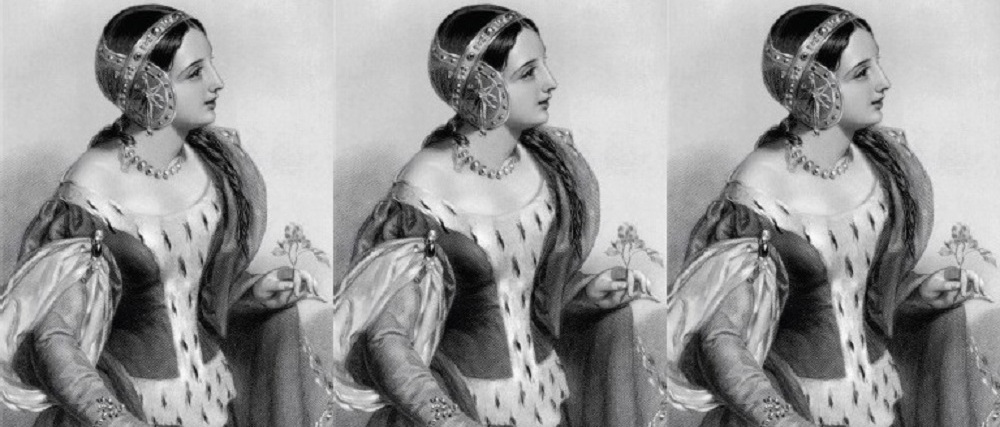Isabella of France
Posted on 11th January 2021
Isabella was born around 1295, the only surviving daughter of King Philip IV of France and Joan I of Navarre. She was cared for by a nurse, given a good education and taught to read and write.
In infancy Isabella was promised in marriage to King Edward II of England, but many years were spent agreeing the marriage contract. They finally married on 25 January 1308 at Boulogne-sur-Mer in France, but they were a very ill-matched pair.
Edward cared little for Isabella and the marriage was not a happy one although it did produce four children; Edward preferred to spend his time elsewhere.
He cared more for his close friend Piers Gaveston than he did for his wife; Edward even gave all of Isabella’s jewellery to Gaveston.
In 1311 Edward led an unsuccessful campaign against the Scots, and he and Isabella only just escaped capture.
The barons were unhappy with the influence that Gaveston had over the King, because of this they signed the Ordinance of 1311, a series of regulations imposed on the King by the peerage of England to restrict his powers. In 1312 as the country descended into chaos, Edward tried to fight the barons but was unsuccessful. The barons had Gaveston executed in 1312 but still the country was unstable.
Isabella was pleased at the death of Gaveston, however Edward found another to replace him, and Hugh le Despenser the Younger came to prominence in Edwards court. Isabella despised Despenser.
Over time the Despensers influenced much control over Edward. By 1324 Edward had given all of Isabella’s land to Hugh le Despenser.
In 1321 with the tension between Edward, Isabella and the Despensers very high, Isabella made her way to Canterbury, stopping at Leeds Castle in Kent on the way. Isabella was a ruthless woman, and having been refused entry to Leeds Castle she forced her way in and then had thirteen of the castle garrison hanged.
In 1325 Edward convinced Isabella to go to France to negotiate over Gascony with her brother Charles IV. Her young son, the future King Edward III was sent to join her. This felt like freedom to Isabella; she had been held a virtual prisoner by her husband in England.
Edward realising this was an error, demanded that Isabella and his son return, but Isabella refused.
Isabella was to rebel against her husband and plot to take the throne for her son. She was joined in this rebellion by Roger Mortimer, Earl of March, later to become her lover.
Isabella needed to raise funds for an army. She travelled with Mortimer to Count William of Hainault in Holland. Isabella agreed a marriage contract between Count William’s daughter Phillipa of Hainault and her son Edward; Hainault then funded an army.
Isabella and Mortimer landed in Suffolk on 1 September 1326. Many nobles joined their cause including Thomas, Earl of Norfolk and Henry of Lancaster.
Isabella swiftly seized control of the country; allies of her husband Edward II quickly deserted him and he was deposed and murdered.
Edward III was crowned in January 1327 with Isabella named as Regent.
Isabella ruled together with Mortimer for four years. During this time, they amassed huge amounts of money and land, but they also fought with much opposition and many deserted her over time.
As Edward III grew up, he became frustrated with the power that Roger Mortimer held. Edward held a coup on 19 October 1330 and placed Mortimer on trial for treason. He was executed in November 1330 at Tyburn.
Edward was lenient to his mother and sent her to live at Castle Rising in Norfolk, where she lived out her retirement. Isabella became very close to her daughter Joan and spent much time with her grandchildren.
She died on 22 August 1358; her body was returned to London where she was buried at the Franciscan Church in Newgate; in her wedding dress.
Tagged as: Junior Middle Ages
Share this post:





